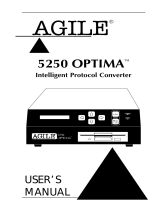
6
PrintFleet Printer DCA
Using the Printer Data Collection Agent
to further configure settings, you will need to open the Printer DCA
application after installation.
Note Some virus detection vendors (such as Symantec)
are now usi
ng crowd-based information to
determine potential threats. Unfortunately, this
methodology is prone to producing false positives,
particularly for executable files that are not widely
distributed among the sample population. As a
result, you may find that the DCA installer is being
flagged as a possible threat by your virus detection
software. When this happens it may be
quarantined, which prevents it from being
installed. If this occurs, contact your system
administrator or virus detection vendor for
information about removing it from quarantine.
For more information about the Symantec issue
specifically, visit this page: http://
community.norton.com/t5/Norton-Internet-
Security-Norton/Clarification-on-WS-Reputation-1-
detection/m-p/232155/highlight/true#M112299
To install and activate the Printer DCA:
1. Double-click the filename Printer DCA 4
.x.x.x.msi
installation file.
2. The Printer DCA Setup Wizard opens to the Welcome to the
Pri
nter DCA Setup Wizard screen. Click Next to continue.
3. Read through the End-User License Agreement, check I accept
the ter
ms in the License Agreement and click Next to
continue. If you do not accept the terms, the installation process
will not continue.
4. In the Select Installation Folder scre
en, either leave the default
folder displayed, or enter a new destination folder. Click Next to
continue.
5. In the Ready to Install screen, click Install
to begin installation
or click Cancel to exit.
6. In the Completing the Printer DCA Setup Wizard screen, leave
check
ed or uncheck Launch Printer DCA and click Finish.
7. After the Printer DCA is launched, in the second End-User
License Agre
ement, select Accept to continue or select Decline
to not continue.
8. In the Welcome to the Printer DCA-Setup Wizard, select the
language
from the drop down list and select Next.
9. In the Printer DCA Activation scre
en, enter the following:
• Enter the server information for the server that the Printer
DCA
will be sending information to in the Server box.
• Enter the PIN code in the PI
N Code box.
• Optionally, if the location is using a proxy server that you
w
ant to configure at this point (you will also be able to do so





















